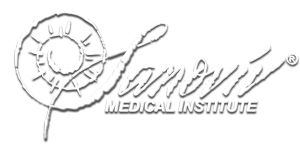Wheatgrass is a variety of grass used for its therapeutic and nutritional properties such as blood purification, liver detoxification and colon cleansing. It is the subject of much medical interest and research. Wheatgrass is one of the highest chlorophyll foods in the world (70% chlorophyll). Chlorophyll is often referred to as “the blood of plant life” as it closely resembles the molecules of human red blood cells. The difference between hemoglobin and chlorophyll is that the central atom in hemoglobin contains iron, whereas the central atom of chlorophyll contains magnesium. It is the chlorophyll and magnesium in wheatgrass juice that helps the blood carry healing oxygen to all the cells.
Wheatgrass is known as a superfood that also provides relatively high amounts of protein (amino acids), vitamins (rich in vitamins A, C and D), minerals, lecithin, and more than 80 living enzymes. Here are some of the key benefits of wheatgrass:
- It rebuilds the bloodstream and improves the integrity of red blood cells.
- Chlorophyll neutralizes toxins in the body.
- It improves blood sugar problems and is great for blood disorders of all kinds.
- It acts as a detergent in the body and is used as a body deodorant.
- Wheatgrass improves digestion, high blood pressure and can remove heavy metals from the body.
- Wheatgrass implants following colon hydrotherapy can heal and detoxify the colon walls.
- It is very helpful for constipation as it is high in magnesium.
How much to drink?
Always drink wheatgrass on an empty stomach and then wait 30-45 minutes before drinking or eating anything else. Begin with 1-2 ounces of fresh squeezed wheatgrass juice daily. The secret to drinking wheatgrass juice happily (without nausea), is to gradually increase the amount as you become acclimated to it. At Sanoviv, we have wheatgrass available twice per day for our guests.
Freshly juiced wheatgrass is best, but for those of us who do not have access to it, our Sanoviv nutritionists recommend this supplement. Please include either organic fresh juice or the capsules in your daily regimen to reach your optimal health.
Salud!
Many thanks to Oscar Perez, one of Sanoviv’s nutritionists, for providing this information.



Is Chlorella as effective as wheat grass juice?
Awesome post. I have been wanting to try wheatgrass shots. I’m looking to start growing my own soon. : )
Thanks for the info! I love the shot of energy I get. Can you say anythingnabout wheat grass vs. barley grass?
Great information on wheatgrass. I want to grow my own wheatgrass. If anyone has some good suggestions on growing it at home, do let me know at schgus@comcast.net.
Thanks!
We will work with our nutritionists and kitchen team for information about barley, wheatberries, and growing wheatgrass. Stay tuned for more!
Wheatgrass is a “gift of health”. In 1994 my liver was very toxic. My doctor was
recommending I go for a liver biopsy and a possible liver transplant. Instead I
spent 5 months at a healing institute where my program included consuming wheatgrass 2x’s daily and wheatgrass implants 2x’s daily. My program also included
an organic raw food diet. Within 5 months I regenerated my liver. Wheatgrass helped save my life!
What would be the best wheat berries to use for growing wheat grass?
I am Celiac…is wheat grass a product that you would have me safely consume as I have been told to avoid all things wheat related?
Thanks
The gluten in wheatgrass is in the seed, or the kernel. If you grow your own wheatgrass and are careful when clipping the grass and juicing, the juice does not contain gluten. At Sanoviv we are very careful to ensure our wheatgrass is gluten free, because we do not serve anything with gluten to our guests. We do not recommend that people with celiac purchase packaged wheatgrass products or consume juice from an unknown source because it may be cross contaminated with the wheatgrass kernels.
If someone is gluten intolerant can they have wheatgrass?
Hi, Beth,
Please see the comment above yours about gluten and wheatgrass.